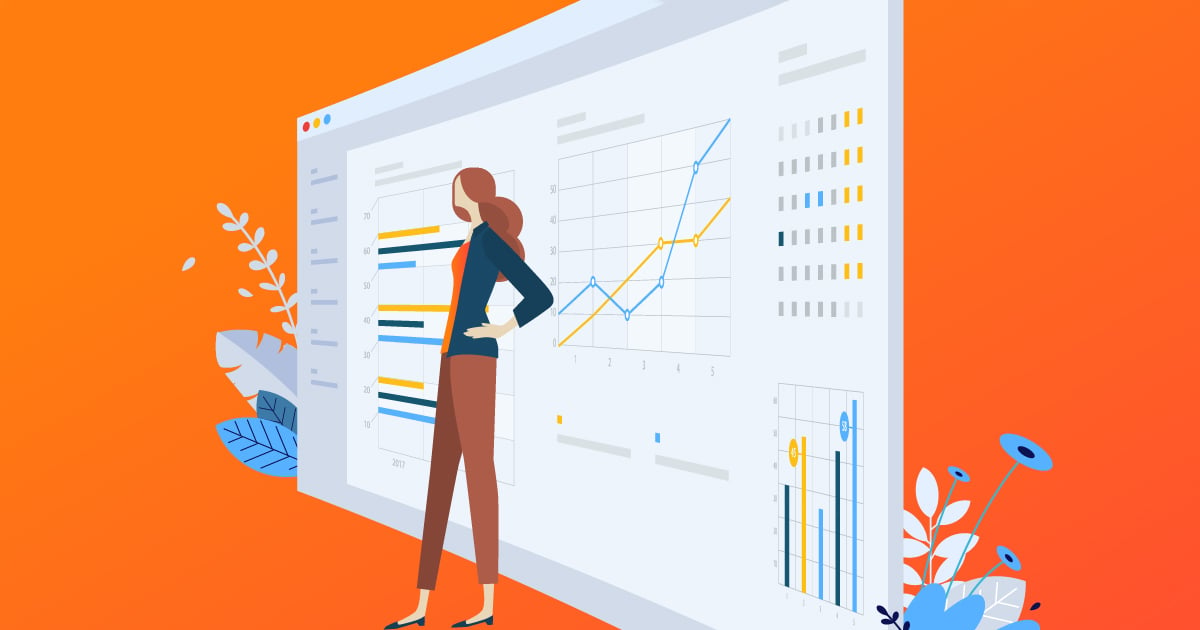What is DSP and Why is it Important for eCommerce?
DSP, or demand-side platform, is a bit different from other advertising mechanics in a few different ways. But mainly, the difference lies in the fact that DSPs allow an advertisers to buy advertising and serve media at scale with the help of automation.
Listen on Spotify
Webinar Content:
- DSP and the Open Web: Real-time Automated Bidding
- The Expansion of Media Types
- How DSP Inverts the Traditional Marketing Funnel
- The Importance of Frequency
- Measuring Success in a DSP
- Getting Started with DSP
- What is Open Web?
- Benefits of Open Web vs Walled Gardens
- Using Unified ID to Track DSP
With DSP, you think about a few different metrics that you wouldn't think about with other advertising platforms. A demand-side platform utilizes real-time bidding for various different media types all over the web – in some walled gardens as well. A walled garden is an eCommerce ecosystem with it's own marketplace (ex. Amazon, Meta, etc.)
The world is your oyster with the DSP. It's about how you use it in your marketing mix more than why you would use it, because you definitely should.
DSP and the Open Web: Real-time Automated Bidding
It's important to to step back a bit and look at how media was originally bought. Display media, especially originally, was bought directly from a publisher for a certain number of impressions. So, you might go directly to the New York Times and say you want to buy skyscraper placement or a header banner display, and you want to buy it for X number of impressions. Then you'd go to the next website you want to advertise on and do the same thing.
That was best practices for buying media back then. But now, with real time bidding, it's very different.
That legacy way of buying display ad space resulted in plenty of issues for marketing. For example, you end up with a lot of double accounting. If a person you're targeting goes to two websites and they end up purchasing, both websites actually count those conversions and charge accordingly.
With a DSP, the bid for the space enters into real-time bidding marketplace. You are competing every microsecond with other advertisers to display your ad. Because these bidding marketplaces use an identifier, you're not double counting any of your results across various different media types or locations.
The Expansion of Media Types
Display is obviously the most widespread used media at the moment. But there are other established media types and also growing media types: video display, pre-reel, mid-reel, pop-up, video etc.
There are also native display types which are a little more contextual than standard display; things like digital audio, or connected TV, or digital out-of-home. These provide a powerful new way to use different media types and build a retargeting pool. It works even when someone hasn't been to your website, which is a very unique type of advertising.
How DSP Inverts the Traditional Marketing Funnel
DSP flips the general marketing funnel on its head and goes into what is often called reverse funnel marketing or bottom funnel marketing where you know who the user you're targeting actually is.
So, you're not trying to reach a user within a segment and get more and more of that segment to be interested in your products. You know a user is interested in "product X" and they are between the ages of "Z and Y" and they visit these type of sites and they live in this area and they shop more when these weather triggers happen ... etc. You know who the user is, and through matching technology like Unified ID, blended cookies, and various other match types, you can target that user over different media without double counting with individual buys.
So, let's say we know Mary in Colorado might want to buy new kitchenware. You can make sure that she sees a kitchenware add on connected TV when she watches her Disney+ show first thing in the morning or on her general news site or listens to your add on digital radio or digital audio on in the car on the way to work.
Whatever media types it takes, you can reach her a set number of times per day ate certain times. That's another thing that's often just forgotten about when it comes to marketing: frequency is important.
Talk to a Finch DSP Expert
The Importance of Frequency
Frequency is simply how many times your brand, products, and ads are being displayed to someone.
When you have all of these different platforms you're advertising on, it's very difficult to control frequency.
However, DSP provides great control over this using matching technology. If you know from your data that you need a person to see an add it between 10 and 25, 5, or 20 times
to raise the potential of convertibility in that person.
You can do that over various different media.
So whether it's c. TV, whether it's audio. You can give your message at the right place at the right time the right number of times to give the greatest statistical chance of conversion.
Measuring Success in a DSP
You can do pretty much anything you want in a DSP. But the reality is, it's a great support engine for a lot of other platforms. Take Google Display, for example. When you hit a certain frequency, you often see that your brand search goes up, which leads to better bottom line finance. The only way to robustly measure that type of omni-channel attribution is to use a blended ROAS approach where you look at the bottom line finance over a time period.
You have to make sure that you are measuring actual ROAS, but not per platform, because it's not very represented with the type of interactions you have between platforms. This is where Marketing Efficiency Ration (MER) comes in as the best way to measure this ecosystem.
There's no other way to really robustly measure the with MER. The more platforms you add, the harder it is to actually measure your results because you might run a Google campaign, and that measures a conversion because somebody's typed an intent-based search term in a search engine. But that conversion is also counted by Facebook because they've seen an ad in that campaign and converted as well. And so on. Y end up getting a lot of double accounting.
Whereas each platform has stuff that they can use to optimize their efficiency, that doesn't necessarily mean that the bottom line changes in in a ratioed or a reflected way. So, it's important to bear in mind that you should always look at spend, not on a day-to-day basis, or even a week-to-week basis, but on a rolling 30-day period.
It's important to remember as well, because you spend a dollar in a particular day, doesn't mean you'll see the conversion in that day as well. There's often a lag. Every company and every product has a different lag. So you need to do some testing to see what that lag is so you can have the correct measurement period for a blended ROAS or MER.
Getting Started with DSP
DSP is a bit complex. So start small and simple when adding DSP to your house marketing mix. We recommend using a self-serve DSP – something with a very good UI. Sure, it'll probably be a bit more opaque than using something like The Trade Desk or even StackAdopt, it'll be a much smoother starting point.
You need to look at your website analytics. Look for the low hanging fruit. Do you have a very high cart abandonment rate? It might be worth starting a cart abandonment retargeting campaign outside of Google's display network just to get extra reach.
From there you incrementally look at specific categories of your site and your products in your site that you know you have good margins. Start campaigns specifically for those using dynamic creative reals or something similar.
And then you can start trickling finance into a DSP to avoid waste.
If you need a big promotional period, go to an agency and make sure that you're speaking to somebody who knows DSPs – who knows the levers to pull to avoid wasting finance. And that's what the purpose should be – avoid wasting your marketing spend, not optimizing it at the very beginning.
Dip your toes into starting on DSP. You don't have to launch a huge complex campaign at the outset. You can start campaigns that solve specific business problems very easily. Let's say your average order value has dropped in the last 3 months and you need to get it back up. Well, you can put dynamic parameters on your targeting to make sure that you only target people who have abandoned carts above a certain value.
Will this change your business overnight? It absolutely will not. Will it have a good impact on your bottom line? Yes, it will. And you can continue to build on the success.
That is what's going to affect your overall picture for the month, quarter, year.
What is Open Web?
Open Web refers to anything that has a digital touchpoint: connected TV, digital banners at bus stops, digital billboards at the side of the road, etc.
So, let's say you sell skiing equipment and you know that people are going to start thinking about skiing when it starts snowing in a specific area. And you know that there's a really busy freeway there with digital billboards. You can set a weather trigger to start bidding on that billboard when it starts snowing.
And that's where the power of open web or the Internet of things is important to consider in your marketing mix.
Benefits of Open Web vs Walled Gardens
So if you're looking at the biggest walled gardens, Amazon and Meta, you can do retargeting. But ultimately you're driving consumers back to buying in that marketplace.
But for you, the advertiser, it isn't always the best thing because you might have an issue with margins when it comes to those marketplaces. You need to sell more product and yes, Amazon might solve some of the logistics of that, but the reality is you still need to look at your entire production cycle and your entire supply chain to accommodate that end goal.
With open web, you can really expand your reach of consumers based on a lot of different criteria. But you get to avail of the full profit margins on your sale by executing it on your site.
Using Unified ID to Track DSP
Unified ID allows us to effectively advertise in a targeted way without the use of cookies.
That's very powerful moving forward because it protects your investment. When cookies do disappear, you have a set time period before that where advertising is going to be fairly useless because you're driving people to your website and you're never going to be able to use their data again.
Switching to Unified ID makes it so you can continue targeting without the reliance on cookies.






